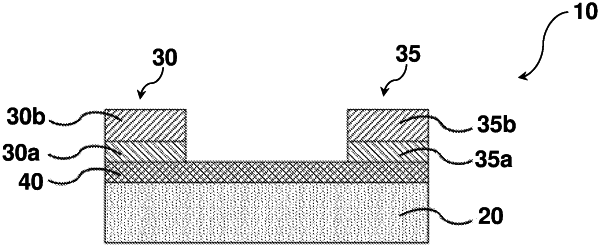| CPC G01J 1/429 (2013.01) [H01L 31/0264 (2013.01); H01L 31/0392 (2013.01); H01L 31/09 (2013.01); H01L 31/18 (2013.01); G01J 2001/4266 (2013.01)] | 15 Claims |

|
1. A sensor for discriminating between wavelength regions in an electromagnetic spectrum, comprising:
a substrate;
a sensing element supported on a surface of the substrate; and
at least one pair of terminal electrodes disposed on the substrate surface in mutually spaced apart and opposing relation, and in electrical contact with the sensing element, wherein the sensing element is responsive to electromagnetic radiation to yield a change in photocurrent measured between the terminal electrodes as a function of an intensity of the electromagnetic radiation impinging thereon, wherein a positive dependency on the intensity corresponds to a first wavelength region and a negative dependency on the intensity corresponds to a second wavelength region;
wherein the sensing element comprises at least one black phosphorus flake, wherein the black phosphorus flake has a lateral dimension that is greater than 1 μm.
|